A woman's place...
Woman's Hour is a British radio institution. First broadcast in 1946, it is one of the longest running programmes on the BBC. From the beginning it set out to reflect women's lives and their concerns, and had a broad mix of features from fashion and household advice to interviews with inspirational (and occasionally contentious) women.
Born at a particularly difficult period - the housewife of the 1940s not only had to cope with the return of her partner from war (not always an easy transition period), she would probably have lost the job that she had taken during the war (possibly for the first time in her life) to a male returnee, and rationing was now worse than it had been during wartime. An early episode of Woman's Hour included a feature "Knit your own stair-carpet", I would have loved to have seen the results.
In 2006 Woman's Hour celebrated its 60th anniversary, and produced a birthday book Woman's Hour : celebrating sixty years of women's lives featuring talks and interviews that had been aired on the programme. Each decade is prefaced by an introduction by a former presenter of the show.
I thoroughly enjoyed the volume, although I wish they'd used a decent proof reader. There were some horrendous howlers - the Amundsen-Scott South Pole Station became the Amazon (one too many women perhaps?)-Scott Station. My favourite chunks of the book were principally the features. There were some wonderful ones that really reflected the massive changes that had taken place in women's lives over the past 70 years - from coping with rationing to becoming a policewoman, changes in contraception and the abortion law, the first self-service laundry in the UK (it was hoped that there would soon be one in every town in Britain, the possibility of a washing machine in every home didn't occur to the reporter), and the rise and rise of feminism.
Alongside this were some truly inspiring interviews - a fellow female pilot who knew Amy Johnson, Dame Kathleen Ollerenshaw, who read Mathematics at Oxford after being rejected by Cambridge because she was deaf, Jerri Nielsen who discovered she had breast cancer in the middle of winter at the South Pole, and Kim Phuc, the little girl who was famously photographed in the middle of a napalm attack during the Vietnam War, who as an adult created a charity for children who have suffered from the effects of war.
There were musicians from Kathleen Ferrier to Ms Dynamite, politicians - Margaret Thatcher, Edwina Currie, Hilary Clinton, and just about any famous woman from the last 70 years. If you're looking for a female role model to inspire you this is the book to read. Some of the stories are astounding.
On balance I preferred the articles to the interviews, some of which felt more like padding. But there were some standout moments - sometimes shocking, occasionally funny, often thought provoking. I was filled with admiration for many of the contributors to Woman's Hour, stunned by the change in social history that is charted in the history of the programme, and often wished that I could have read the full transcript of some of the features.
It's a great book to dip into, and for all its faults (there could have been a little more judicious editing) I found it compelling reading. A great book to read whether you're a fan or just interested in social history. Next year will be Woman's Hour's 70th anniversary. Let's hope that there will be another published birthday celebration.
Born at a particularly difficult period - the housewife of the 1940s not only had to cope with the return of her partner from war (not always an easy transition period), she would probably have lost the job that she had taken during the war (possibly for the first time in her life) to a male returnee, and rationing was now worse than it had been during wartime. An early episode of Woman's Hour included a feature "Knit your own stair-carpet", I would have loved to have seen the results.
In 2006 Woman's Hour celebrated its 60th anniversary, and produced a birthday book Woman's Hour : celebrating sixty years of women's lives featuring talks and interviews that had been aired on the programme. Each decade is prefaced by an introduction by a former presenter of the show.
I thoroughly enjoyed the volume, although I wish they'd used a decent proof reader. There were some horrendous howlers - the Amundsen-Scott South Pole Station became the Amazon (one too many women perhaps?)-Scott Station. My favourite chunks of the book were principally the features. There were some wonderful ones that really reflected the massive changes that had taken place in women's lives over the past 70 years - from coping with rationing to becoming a policewoman, changes in contraception and the abortion law, the first self-service laundry in the UK (it was hoped that there would soon be one in every town in Britain, the possibility of a washing machine in every home didn't occur to the reporter), and the rise and rise of feminism.
Alongside this were some truly inspiring interviews - a fellow female pilot who knew Amy Johnson, Dame Kathleen Ollerenshaw, who read Mathematics at Oxford after being rejected by Cambridge because she was deaf, Jerri Nielsen who discovered she had breast cancer in the middle of winter at the South Pole, and Kim Phuc, the little girl who was famously photographed in the middle of a napalm attack during the Vietnam War, who as an adult created a charity for children who have suffered from the effects of war.
There were musicians from Kathleen Ferrier to Ms Dynamite, politicians - Margaret Thatcher, Edwina Currie, Hilary Clinton, and just about any famous woman from the last 70 years. If you're looking for a female role model to inspire you this is the book to read. Some of the stories are astounding.
On balance I preferred the articles to the interviews, some of which felt more like padding. But there were some standout moments - sometimes shocking, occasionally funny, often thought provoking. I was filled with admiration for many of the contributors to Woman's Hour, stunned by the change in social history that is charted in the history of the programme, and often wished that I could have read the full transcript of some of the features.
It's a great book to dip into, and for all its faults (there could have been a little more judicious editing) I found it compelling reading. A great book to read whether you're a fan or just interested in social history. Next year will be Woman's Hour's 70th anniversary. Let's hope that there will be another published birthday celebration.


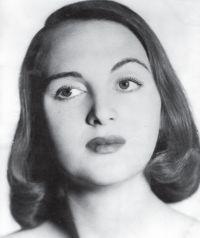

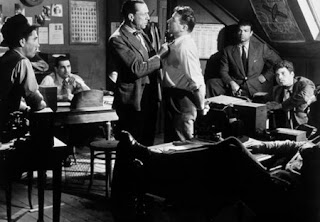
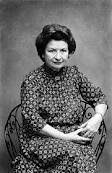
.jpeg)



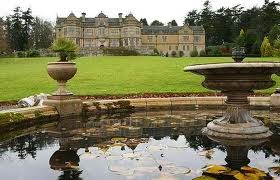
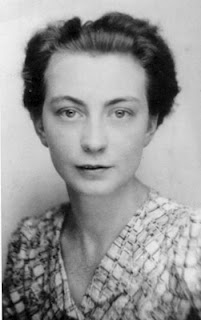
Comments